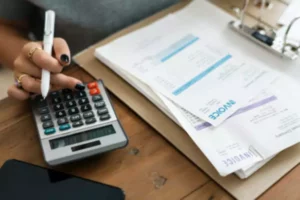By admin October 14, 2021
Content

The following examples show the application of the double and 150% declining balance methods to calculate asset depreciation. Under the declining balance method, yearly depreciation is calculated by applying a fixed percentage rate to an asset’s remaining book value at the beginning of each year. On the other hand, this method is more complicated to calculate than straight line depreciation. Businesses must also consider that as the depreciation expenses of assets decline, their tax expenses will increase.

Double declining balance depreciation is an accelerated depreciation method that expenses depreciation at double the normal rate. The impact on financial statements when deciding whether to use the double declining balance method. Now the double declining balance depreciation rate is calculated by doubling the straight-line rate.
Examples
As you can see in the double declining balance method analysis, a few key assumptions have to be made, and from there, an analyst can build the full schedule.
We can understand how the depreciation expense is calculated each year under the double-declining method from the below schedule. For example, last year, the actual depreciation expense as per the depreciation rate should have been $13,422 but kept at $12,108.86 to keep the asset at its estimated salvage value. So, the depreciation expense is calculated in the last year by deducting the salvage value from the opening book value. Enter the straight line depreciation rate in the double declining depreciation formula, along with the book value for this year.
The drawbacks of double declining depreciation
Assets with no salvage value will have the same total depreciation as the cost of the asset. Is a form of accelerated depreciation in which first-year depreciation is twice the amount of straight-line depreciation when a zero terminal disposal price is assumed. The depreciation method used shall reflect the pattern in which the asset’s future economic benefits are expected to be consumed by the entity.

Written-down value is the value of an asset after accounting for depreciation or amortization. Investopedia requires writers to use primary sources to support their work. These include white papers, government data, original reporting, and interviews with industry experts. We also reference original research from other reputable publishers where appropriate. You can learn more about the standards we follow in producing accurate, unbiased content in oureditorial policy.
Step two
This means that compared to the straight-line method, the depreciation expense will be faster in the early years of the asset’s life but slower in the later years. However, the total amount of depreciation expense during the life of the assets will be the same. The double-declining balance depreciation method, also known as the reducing balance method, is one of two common methods a business uses to account for the expense of a long-lived asset.

However, the https://www.bookstime.com/ will stop when the asset’s book value is equal to the estimated salvage value. At the beginning of Year 5, the asset’s book value will be $40,960. In year 5, companies often switch to straight-line depreciation and debit Depreciation Expense and credit Accumulated Depreciation for $6,827 ($40,960/6 years) in each of the six remaining years. At the beginning of Year 4, the asset’s book value will be $51,200. Therefore, the book value of $51,200 multiplied by 20% will result in $10,240 of depreciation expense for Year 4.
Declining Balance Method of Assets Depreciation
If something unforeseen happens down the line—a slow year, a sudden increase in expenses—you may wish you’d stuck to good old straight line depreciation. While double declining balance has its money-up-front appeal, that means your tax bill goes up in the future. Every year you write off part of a depreciable asset using double declining balance, you subtract the amount you wrote off from the asset’s book value on your balance sheet. Starting off, your book value will be the cost of the asset—what you paid for the asset.
- Similarly, credits are available for business vehicles that use electricity or an alternative fuel source.
- This is when that year’s depreciation is limited to the amount that will reduce the asset’s book value to its residual value.
- Our mission is to empower readers with the most factual and reliable financial information possible to help them make informed decisions for their individual needs.
- Have you ever gotten stuck in your study because you can’t remember a formula, or what a specific term means?
- At the beginning of Year 4, the asset’s book value will be $51,200.